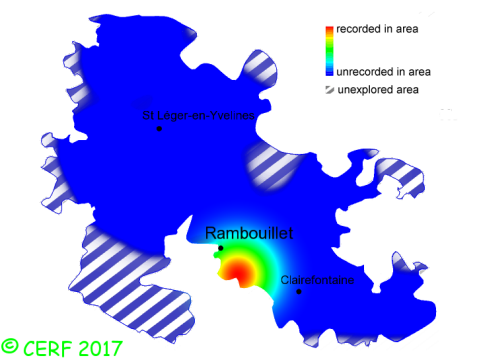|
Coprinopsis nivea (Pers.) Redhead, Vilgalys & Moncalvo
|
common name(s) : Snowy Inkcap, Snow White Ink Cap
New classification: Basidiomycota/Agaricomycotina/Agaricomycetes/Agaricomycetidae/Agaricales/Psathyrellaceae
Former classification: Basidiomycota/Homobasidiomycetes/Agaricomycetideae/Agaricales/Coprinaceae
synonyms: Coprinus niveus, Coprinus latisporus
edibility : inedible
|
|
|
The cap is white, covered with a white powder, egg-shaped then bell-shaped, with a broad umbo; its margin is striate, cracked and upturned.
The cap surface is smooth, pruinose, not viscid nor sticky.
The stem is white, short, tapering towards base, sometimes becoming yellow at the base, without ring.
The flesh is white, unchanging; its taste is mild or faint; the odour is weak or not distinctive;
its texture is fibrous.
The gills are white, grey then black and deliquescing, free to ascending, crowded .
The spore print is black. This species is saprophytic.
It grows on the ground, on horse or cow dung or manure.
The fruiting period takes place from July to November.
| Dimensions: | width of cap approximately 2.5 cm (between 0.5 and 5 cm) |
| | height of stem approximately 6 cm (between 1 and 10 cm) |
| | thickness of stem (at largest section) approximately 5 mm (between 2 and 7 mm) |
Chemical tests : none.
Distinctive features : white colour, on horse or cow dung
Coprinopsis nivea is rare and confined in the forest of Rambouillet, and is occasional, more generally speaking
.
|  | | Above : distribution map of Coprinopsis nivea in the forest of Rambouillet |
|
page updated on 14/01/18